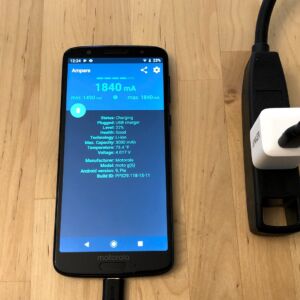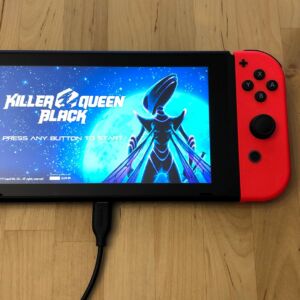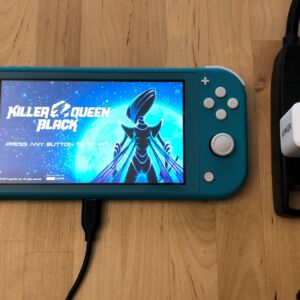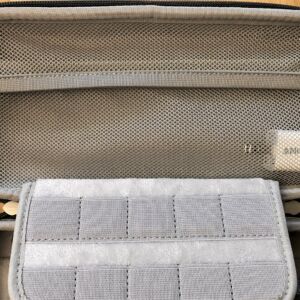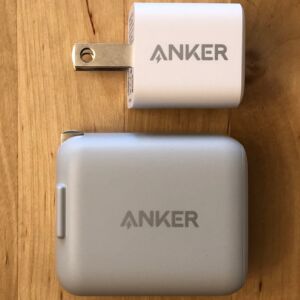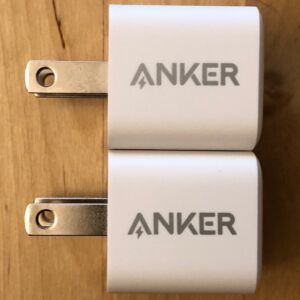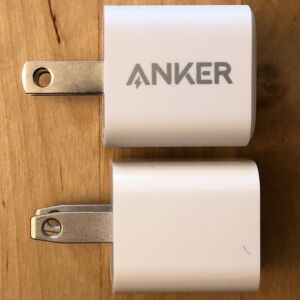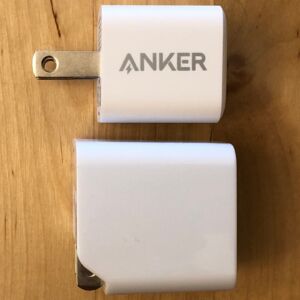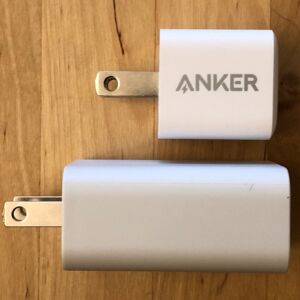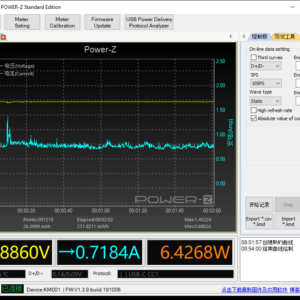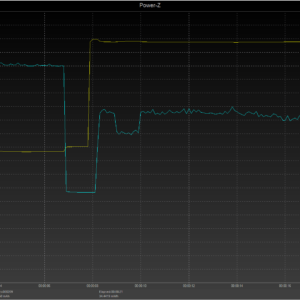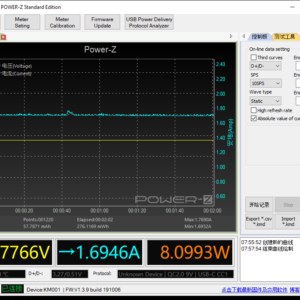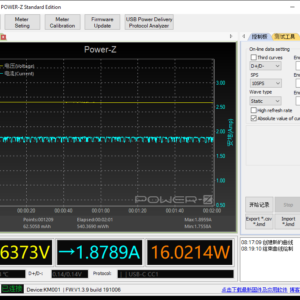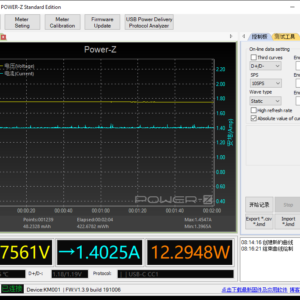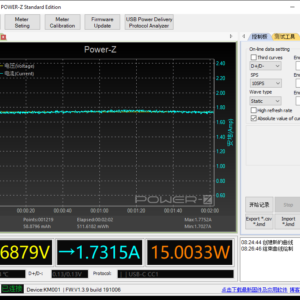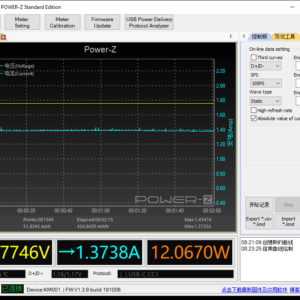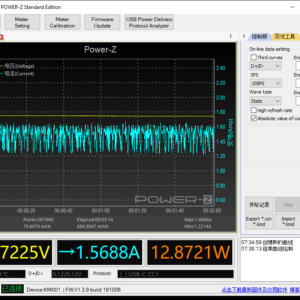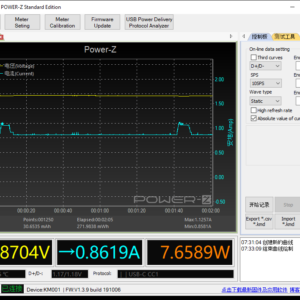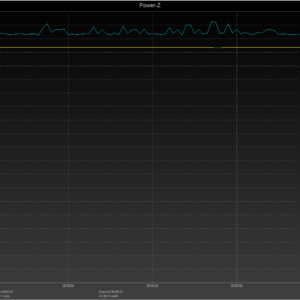Anker PowerPort III Nano - A tiny fast charger for newer iPhones and Android
Summary
The Anker PowerPort III Nano is Anker’s most advance 18W USB-C fast charger. Featuring PowerIQ 3.0, it supports USB-C PD and Quick Charge 3.0. In a tiny package.
Overall
-
Performance
(5)
-
Design
(5)
-
Safety
(4)
-
Portability
(4.5)
User Review
( votes)Pros
- Fast charges iPhone, Samsung Galaxy, Google Pixel, and LG phones
- Charges Switch while you play
- Fits in most Switch carrying cases
- Small design
- Works worldwide with 100-240V power input (may need a plug adapter)
Cons
- Quick Charge 3.0 over USB-C is against USB-C specs
- Doesn’t include a USB-C to USB-C cable
- Prongs don’t fold
Disclosure: As an Amazon Associate I earn from qualifying purchases. I purchased the product in this review.
No products found.
Model: A2616
Tech Specs:
- Ports: USB-C
- USB-C Output:
- 18W USB-C Power Delivery 3.0 (5V/2.4A, 9V/2A)
- PowerIQ 3.0 (Quick Charge compatible)
- Apple 2.4A
- Input: 100V–240V, 0.6A, 50/60Hz
- Size: 1.8 x 1.1 x 1.1 inches | 45 x 28 x 28 mm (including prongs)
- Weight: 1.1 oz | 30 grams
Learn more about Fast Charging.
Included In Box:
- Anker PowerPort III Nano
- USB-C to USB-C cable
Good For:
- Additional charger for home or work
- Commute
- Travel
- iPhone
- Android
- 18W USB-C PD Power Banks
- Nintendo Switch (handheld)
- iPad Pro (pre-2018)
First Impression
The Anker PowerPort III Nano looks a lot like Apple’s 5W USB power adapter. Almost the same size. With the same shape and fixed prong design. But the large Anker logo on one side makes it easy to distinguish the two. Not to mention the USB-C port with IQ3 listed above it. The branding is not subtle.
The fixed prongs are a downside for some consumers. But it does keep the charger’s size and weight down. Hinges add one more element. Which in turn adds mass and complexity. Comparing to similar models with folding prongs you can see a difference.
Compared To Similar Chargers
| Charger | Anker PowerPort III Nano | Anker PowerPort PD Nano Review | Anker PowerPort PD 1 Review | AUKEY PA-Y18 18W PD Review | Google 18W USB-C Power Adapter Review |
| Output | 18W USB-C PD PowerIQ 3.0 | 18W USB-C PD | 18W USB-C PD | 18W USB-C PD | 18W USB-C PD |
| Features | Quick Charge 3.0 compatible | USB-IF Certified | USB-IF Certified Folding prongs | Folding prongs | |
| Cable | No cable | No cable | USB-C to Lightning cable | No cable | USB-C to USB-C cable |
| Dimensions | 1.8 x 1.1 x 1.1 in 1.1 oz | 1.8 x 1.1 x 1.1 in 1.1 oz | 2 × 1.7 × 1.1 in 2.1 oz | 1.4 x 1.4 x 1.3 in 1.5 oz | 2.1 x 1.6 x 1 in 2 oz |
| Price | Price not available | $22.99 | Price not available | No products found. | $34.99 |
Prices are from Amazon Product Advertising API, last updated on 2024-10-22.
You can see more USB-C chargers here.
Device Testing
Check with your device’s manufacturer to verify which charging standards it supports.
USB Power Delivery & Quick Charge 4+ Phones
- Apple iPhone 8/X/XR/XS
- Essential Phone
- Google Pixel
- LG ThinQ/V30
- Razer
- Samsung Galaxy S8/S9/S10
- Samsung Galaxy Note 8/9
- Xiaomi Mi 8/9
- ZTE Axon Pro 9/10
Using an iPhone 8 for testing we find USB PD phones will fast charge over the USB-C port. iPhones will need to use a USB-C to Lightning cable, not included. And Android phones will need a USB-C to USB-C cable, which is included.
Apple 2.4A is also supported. So it should fast charge older iPhone 4-7 models, though not as fast. But given the upgraded cable needed it isn’t the best value for those older phones.
Quick Charge 3.0 Phones
- HTC
- LG
- Motorola
- Nokia
- Samsung Galaxy
- Sony
- Xiaomi Mi 5/6
- ZTE
Using a Moto G6 for testing we don’t see Quick Charge engage. So charging is at its normal rate. This is normal with Motorola phones when QC is offered over USB-C. Samsung Galaxy, LG, and other QC supporting Android phones would be expected to fast charge.
Nintendo Switch
In all cases, it’ll fast charge while you play. And charges at its max rate while asleep. The original Switch underdraws from 9V/2A chargers, while the new Switch and Lite correct that issue.
Learn more about charging the Switch.
Quick Charge 3.0 Over USB-C
The presence of Quick Charge over USB-C is against USB-C specifications. Such chargers have been around for years without issue. But we don’t know what the future holds.
Under section 4.8.2 of USB-C specifications, a proprietary charging method cannot change the voltage of USB-C output (between 4.40V and 5.25V) in a manner not defined by USB methods. Quick Charge operates at higher than default voltages. And so goes against the specifications. USB Power Delivery is an open-source charging method. Created alongside USB-C, it is with specs even though it also increases the voltage. The big difference is USB PD uses communication lines to negotiate power transfer. While proprietary methods take over the data lines for their negotiation. They do so because legacy USB connections, such as USB-A, don’t have comm lines.
There is no known risk with running proprietary charging standards over USB-C. Manipulating the data lines does disrupt data transfers. But when plugging into a wall charger or power bank there is no data transfer anyway. Some USB-C engineers warn against using any USB-C chargers with third party standards. Their concern is unforeseen consequences. Future technology may prove to be incompatible with such configurations. And pulling out a charger several years from now with a new device could have a bad result.
I have not run into any issues with these fast charging standards on this or any other charger. But as it is a spec violation I want you to be informed. If you’re a stickler for meeting USB-C specifications this isn’t a good charger for you. If you’re more pragmatic it works fine and has no known issues.
Folding vs Fixed Prongs
A big selling point for the older PowerPort III Nano is its small size. Thanks to the design choice to use fixed prongs instead of folding ones. Looking at Anker’s older PowerPort PD 1 with folding prongs clearly demonstrates the space savings. If you look at user comments on either you’ll see some demand for folding prongs. While others are more concerned with other aspects.
Fixed prongs leave ~0.66 inches of metal sticking out from the charger’s housing. Potentially snagging or scratching other items in your bag. So you’ll need to be careful where you store them. But the upside is a smaller and lighter charger can be produced. And no moving parts to worry about.
Folding prongs pack up neater. And don’t leave protruding metal out to snag on other items in your pocket or bag. But to do this a hinge has to be housed inside the charger. And the housing has to belong and tall enough to encompass the prongs. This increases the size and weight of the charger. It also introduces moving parts, which could fail.
There’s no right answer and it comes down to consumer choice. Apple, Samsung, and Google phone chargers have fixed prongs with no issues. While there’s enough demand for folding prongs Anker and others fill that need. So the debate will continue without any clear winner. Go with whichever design you prefer. And barring a preference buy based on the best value for you.
Summary
The Anker PowerPort III Nano is as universal of a phone fast charger as you’ll find. Their PowerIQ 3.0 tech combines USB Power Delivery and Quick Charge compatibility. Much like Quick Charge 4+. But by using their own standard they violate USB-C specifications. So while the charger performs fine it would never meet certification requirements.
It fast charges the most popular iPhone and Android models from the last several years. The big exceptions include Motorola phones that only support Quick Charge 3.0. And most Huawei and OnePlus phones. But it will still charge any of them at a normal rate.
For the Nintendo Switch, it’ll charge while you play in handheld mode. It is a bit slower with the original model compared to a 30W charger. But you won’t notice the difference.
When compared to the charger your phone came with you can see why Anker’s is worth the add-on buy. It is smaller than all their included fast chargers. And about the same size as the much slower 5W charger, Apple includes with most iPhones.
The non-folding prongs are a problem for some. And of no concern to others. They are no bad design, but rather a choice with its own pros and cons. You’ll want to be mindful of where you place the charger along with more delicate items. But in exchange, you get a smaller and lighter charger. If you’d prefer folding prongs you’ll need to look at larger chargers. If you don’t have a preference then buy based on what’s the best value for you.
About Anker
Anker has U.S. based support (web, email, phone) and an 18-month warranty. And their own online community with forums. They are a beloved brand within many USB-C communities.
Bottom Line
The Anker PowerPort III Nano is a great second charger (or first fast charger) for Apple, Samsung, Google, LG, and other phones. As well as various tablets and the Nintendo Switch. Its dual USB PD and Quick Charge compatibility make it ideal for mixed households. And while you may not love the fixed prongs, they do keep the size and weight down.
Buy if you:
- Need a fast charger for most model iPhones or Android from the last few years
- Value size/weight above all else
- Want a charger that could fit in a pocket
Don’t buy if you:
- Are a stickler for USB-IF certified devices
- Want one charger for small and large devices
- Value folding prongs over smaller size/weight
No products found.
Be sure to check the Deals page to see if this or a similar charger is on sale.
Enjoyed this review? Sign up for the Switch Chargers newsletter and get updates on future reviews and Nintendo Switch related deals.





